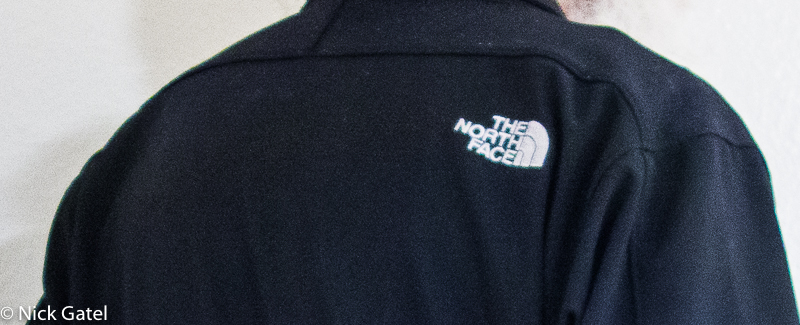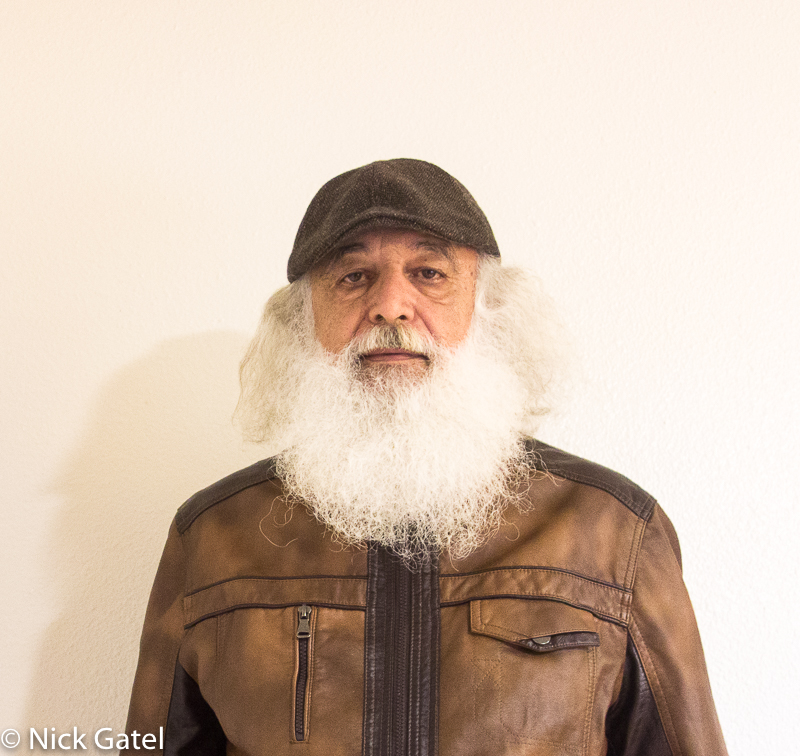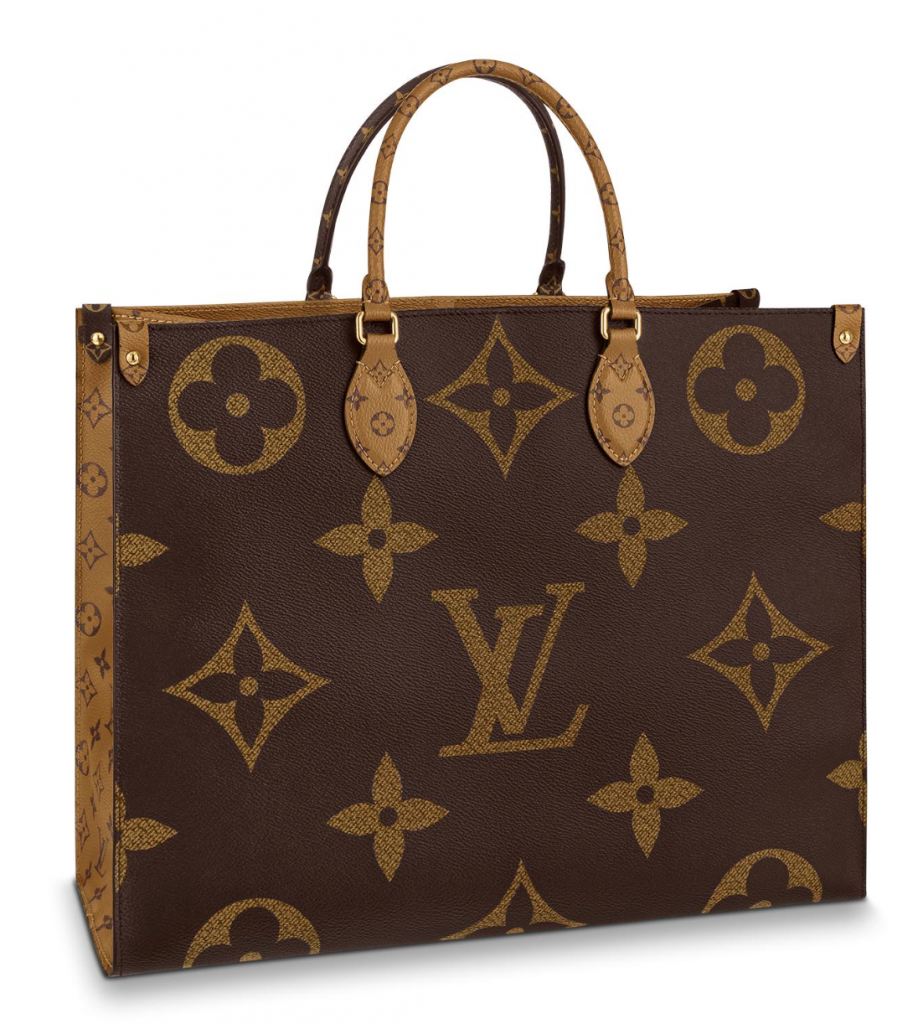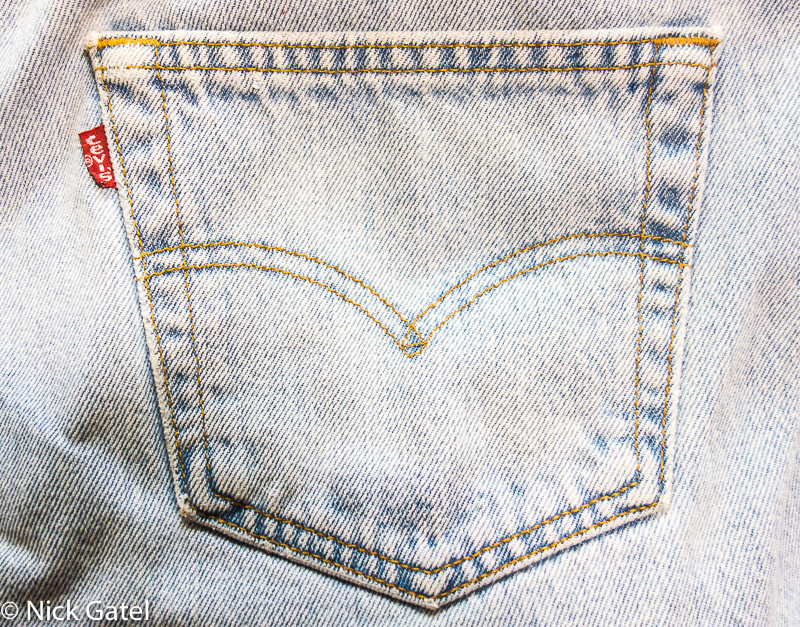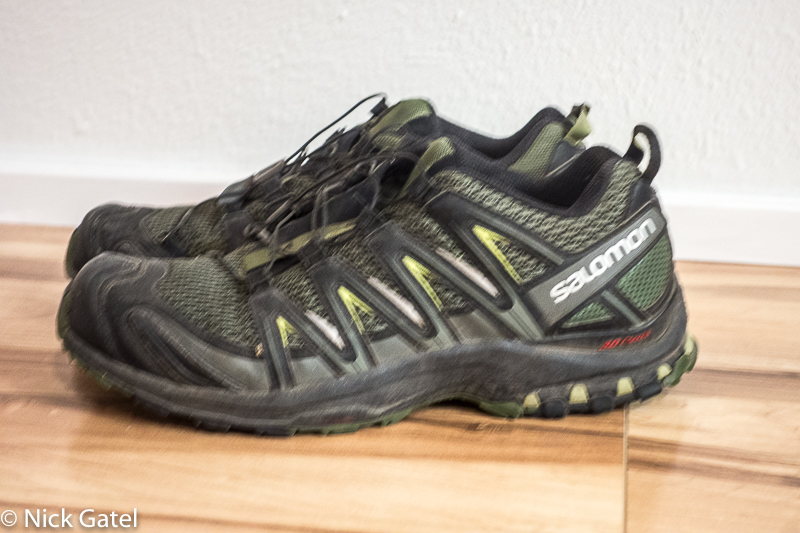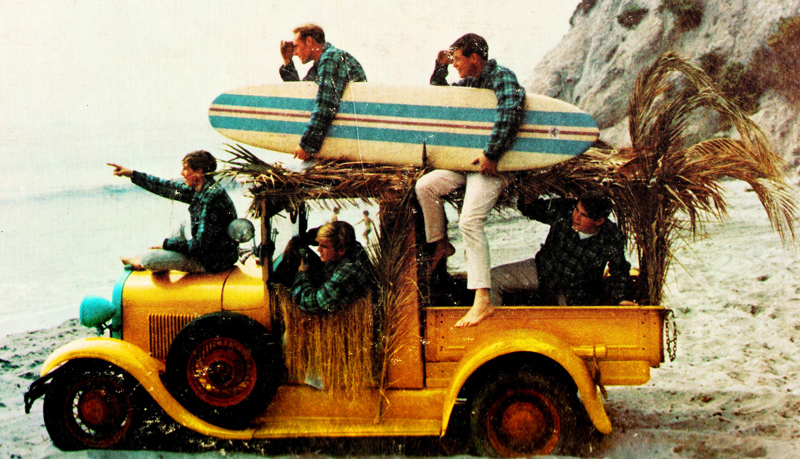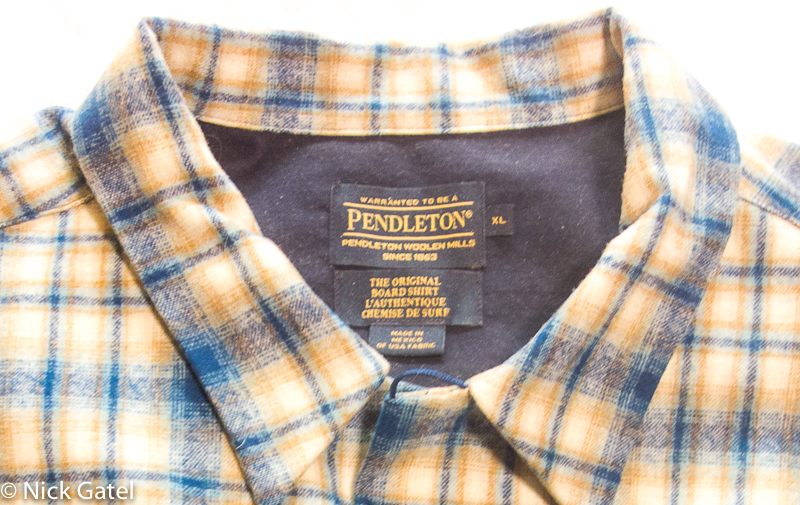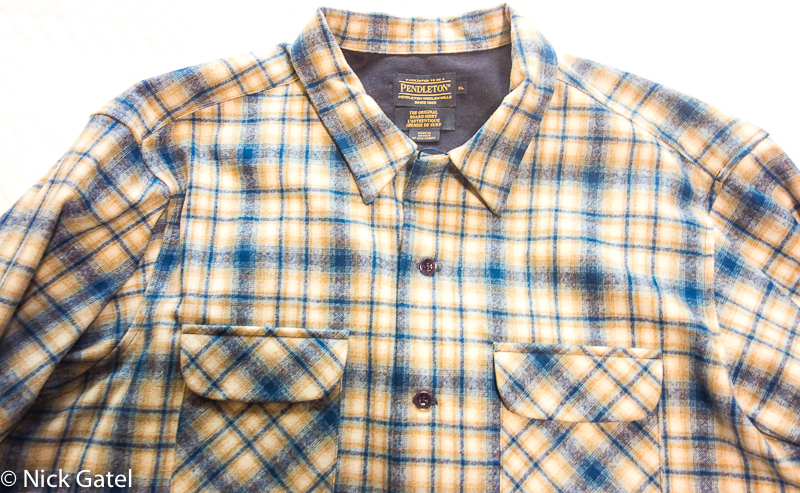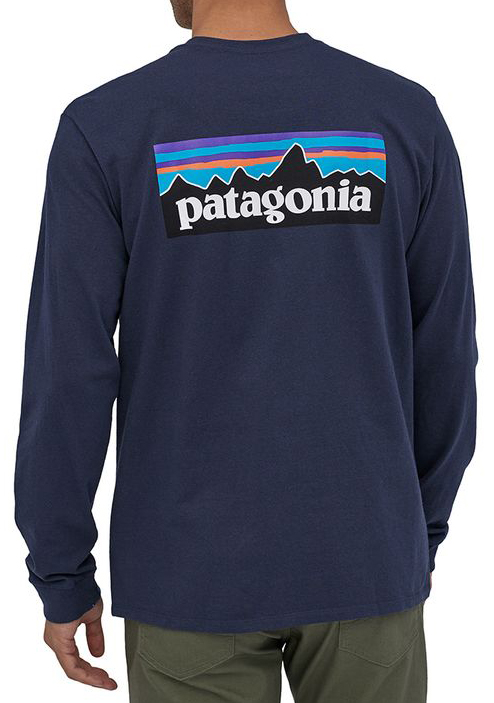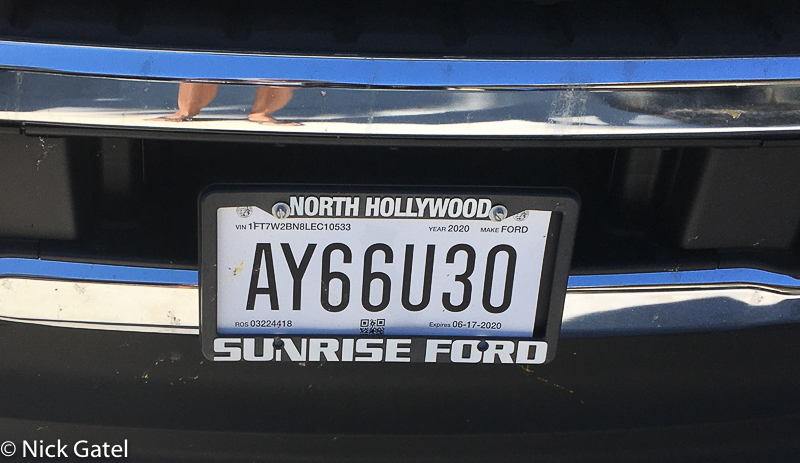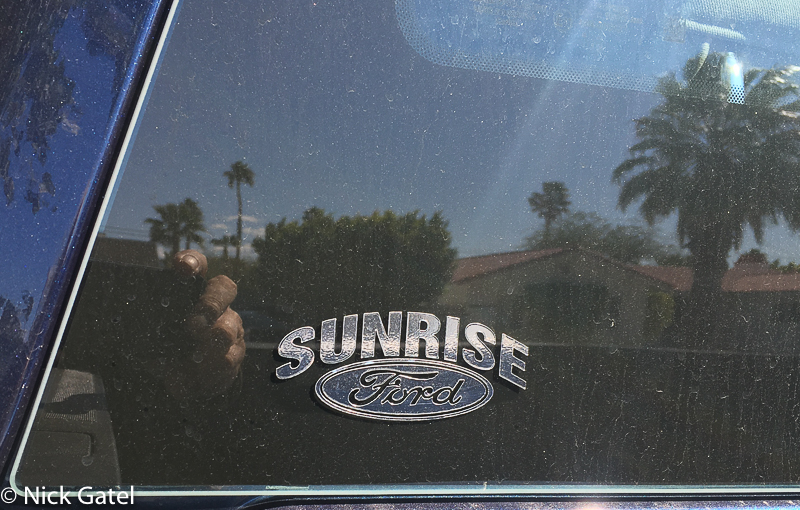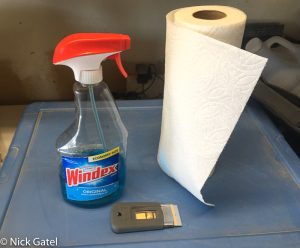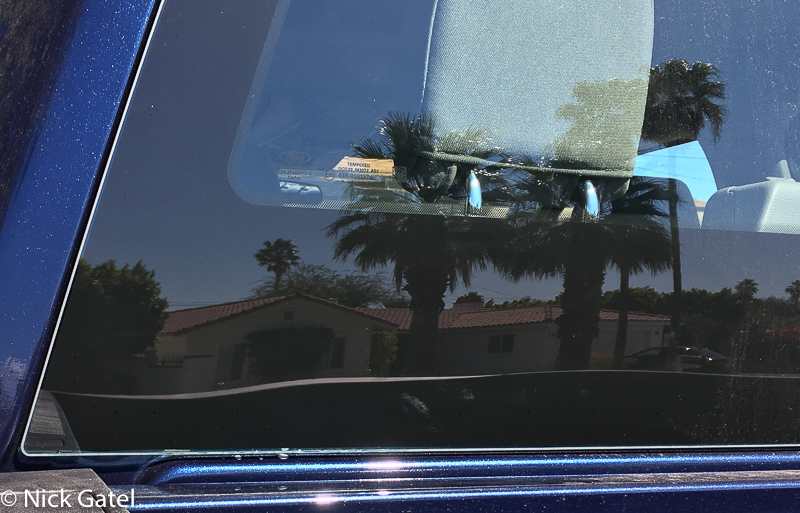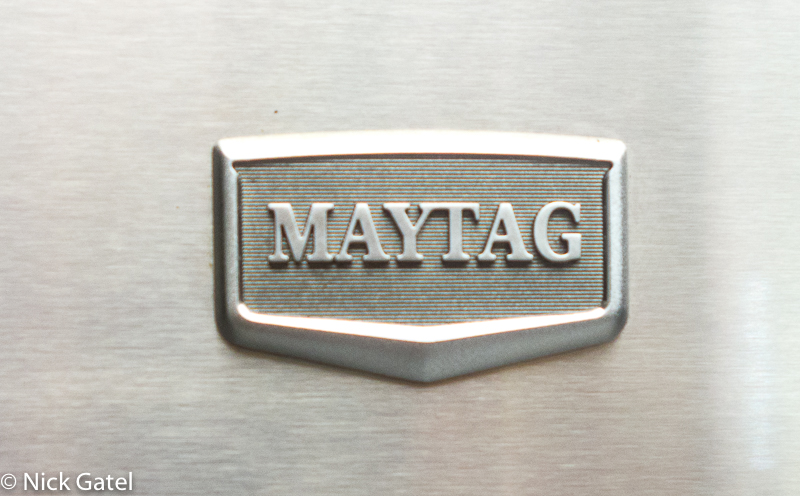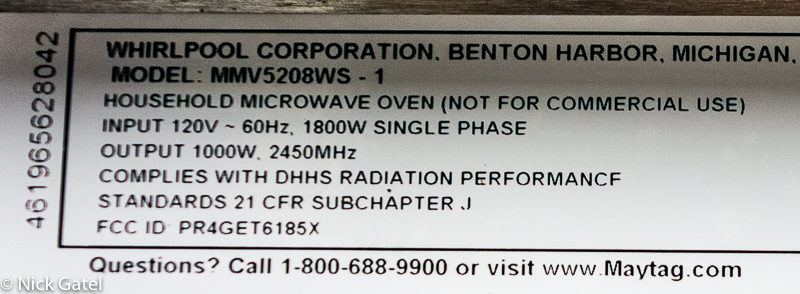What’s Up With That?
Yeah, it’s a pet peeve of mine. How popular companies with expensive prices prominently display their logos on the products they sell so we can advertise for them.
Above are two items I like, but never wear in public. The cap is sold by Mountain Hardware and is made from Wind Pro® fleece manufactured by PolarTec®. In colder weather it’s my favorite cap. But I only wear it on backpacking trips, and I do most of my trips alone. The jacket is made from a “soft-shell” material, is athletically cut, is wind and water resistant. I’ve had it for over ten years, a gift from my son. But I never wear it around town. I keep in in our camper and use quite often on our camping trips where we are alone and cannot be turned into an adverting billboard.
This manufacturer adds insult to corporate logo injury by sticking another logo on the back of the jacket too!
Why Can’t They Do This?
The cap is made from a wool/polyester blend, the leather jacket look is actually leather. Both are quality items, well known brands, and fairly expensive. I wear them often around town because they are comfortable, fit well, keep me warm, and have no logos on them.
Perhaps we shouldn’t blame the companies too harshly, since consumers WANT to show off these logos. Why they want them is for psychologists to explain, and hopefully they can develop a vaccine or other remedy to treat this mental illness of folks wanting to show off their logo infested goods. People want to wear these logos so badly, they have spurred a huge industry of counterfeit clothing and accessories. On the most counterfeited products are Louis Vuitton purses and carrying bags, which plaster the LV logo all over the product.
This Louis Vuitton bag retails for $2,560. I am fairly certain I can find a similar quality bag without logos for much, much less money. I have looked at these bags very closely, and yes they are well made, but a lot of the price is driven by the company’s image as a designer product and the associated marketing costs. By the way, this particular bag is made from canvas.
Awareness of Corporate Logos by Children
If you’re a parent, then you have probably experienced the pain of kids wanting these expensive logo-influenced products. If you don’t have kids, you might have gone through the fashion influence as a kid. I did.
The ’60s
In junior high and high school I lived near the southern California beaches. It was the time of Surfin’ Safari. Like many young people of the time, I spent a significant part of my summers at the beach surfing. Along with this surf culture, was its own fashion accompaniment for boys. Almost a uniform, as I look back. The four “mandatory” pieces were:
- white JC Penny Towncraft T-shirt
- Levi’s blue jeans
- Converse All Star canvas shoes
- Pendleton wool shirts
JC Penny Towncraft T-shirt
These were made from 6.1 ounce (per yard) 100% cotton, with a crew neck, and rather long sleeves. They did not have a logo. Just by looking at the shirt, you would know it was a JC Penny Towncraft, by its fit and quality construction. Of course, as most companies do, JC Penny switched to lighter cheaper materials and construction, lost market share, and discontinued them decades ago.
Today, one can still buy similar t-shirts made from 6.1 ounce cotton, like the Hanes Beefy T.
I prefer these shirts by Pro Club, which are made from even heavier 6.5 ounce 100% cotton:
Levi’s Blue Jeans
We wore the plain ol’ 501 jeans, which were really “work” jeans at the time. During the ’60s and ’70s the Levi brand took off, because all the the kids, and then adults, started wearing them.
Yeah, they had a logo, but not very obtrusive. Even if one cut off the tiny tag on the pocket, the “winged” stitching would give away the brand. But more importantly, they quality was superior to all the other blue jean offerings of the time. Even from a distance, it was obvious who made them.
I still wear them along with the Wrangler brand of jeans, which I prefer because they are of equal quality, in my opinion, and cost less.
Converse All Stars
In the ’60s your choice for athletic shoes were Converse, Jack Purcell, Keds, and cheaper shoes sold by department stores.
That was it. We wore Converse because they lasted the longest, plus they were in style. We also wore them for gym class – usually the same pair we wore to our academic classes.
I still wear them, over 60 years later. The logo is simple and doesn’t use the Converse name. They style is iconic, so no real need for a logo. It’s a clean and simple logo compared to the typical shoe today (below).
Pendleton Wool Board Shirt
It doesn’t rain much in southern California and the weather is mild. In late fall and winter it does get chilly and these wool shirts are perfect when a little warmth is more important than weather protection. When wool does get wet it still has some warming properties. Its an ideal outer garment is SoCal. Which it is why it became popular with the local surfers.
Also driving its popularity was the rock ‘ roll group, the Beach Boys. Originally named the Pendletons, the Pendleton wool shirt was often part of their persona, as shown in the picture below from their Surfin’ Safari album released in 1962.
Usually entertainers are not trendsetters, they really reflect their culture. As such, the Beach Boys simply reflected the surf culture of the late ’50s and ’60s.
Actually, these weren’t called “board shirts,” as they are today. We just called them wool shirts. In the ’60s you could buy a Pendleton in just about any quality department store. Today Pendleton still sells them, calling them “board shirts” now. You will be hard-pressed to find them in any department store today, even higher end stores like Macy’s or Nordstroms. Quality wool is an expensive material, so for retailers used to jacking up the price on inferior products, selling these shirts would simply price them too high – plus there is no Pendleton logo on the shirt.
Pendleton’s website states this about the shirt:
An essential among California surfers in the '60s, and still our bestselling shirt today. Made from premium, machine-washable wool sourced from local ranchers in Umatilla County, Oregon near our Pendleton mill. Rugged, midweight fabric is water, odor and stain-resistant. Square bottom, two bias-cut pockets.
I have three of four of them in the closet and like to wear them during winter around town.
Fortunately, no logos on them!
If you want one, size up.
Dealing with Logos
For urban wear, I try to avoid clothing with logos.
For outdoor wear, wear that is used for activities like backpacking, it is sometimes difficult to avoid logos. I suppose one could spend time removing them, with a risk of damaging a garment. But why buy an article and then spend time and perhaps money to remove a logo?
Although I have a few favorite outdoor brands, the majority of my backpacking clothing and accessories are made by Patagonia. Quality gear that works. Their logos are rather minimal compared to the first picture I posted at the beginning of this post, such as this Houdini windshirt, one of my most used clothing items.
Et tu Brute?
But even Patagonia can go crazy with their urban wear.
I won’t be buying one of these.
When it Makes Sense to Get Rid of Logos
Obviously, cars, SUVs, and trucks all have logos. Removing them would be a real pain in the ass. But some aren’t too gaudy. This logo on our Hyundai isn’t too bad.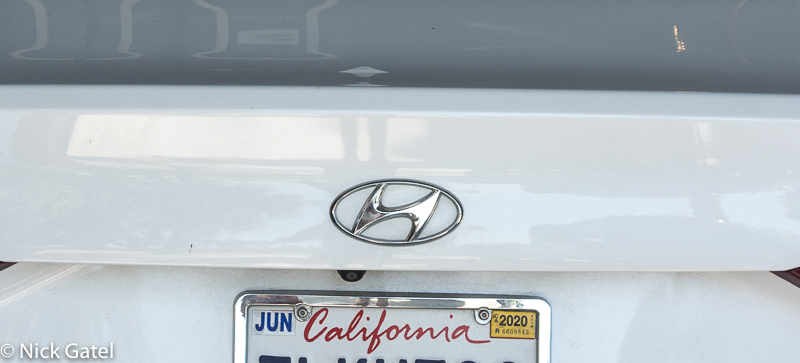
Our Ford Mustang has one single logo and it’s rather small.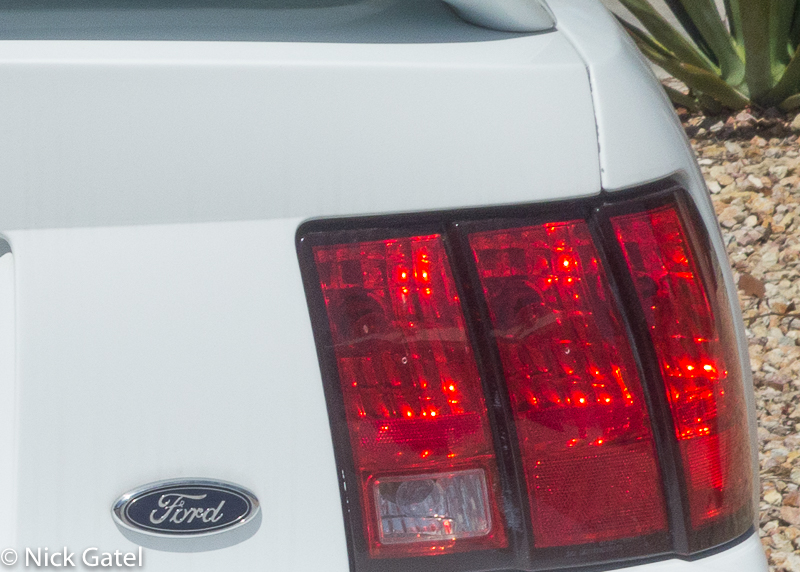
On the other hand, most new car dealers add their own logos to the cars they sell, in addition to the factory ones. Some dealers will glue on a metal or heavy plastic logo to the body somewhere, which I just hate.
Pro Tip: These kinds of logos can be removed with a little care. Taking a piece of thin fishing line, slide the line behind the logo and the body. Carefully work the line back and forth, moving the line from one end of the logo to the other and the logo should fall off. Next using a specialty adhesive remover that won’t damage the paint, remove all adhesive following the directions on the remover container. Good luck trying to find this kind of remover in California – most aren’t allowed to be sold in our fine state.
When we bought our F-250 Super Duty last month, the dealer installed their own license plate frames and a logo decal on the rear window. We like the dealer we purchased from, but I’m not going to do their advertising. So when I got home, I went to work…
Nice Logos?
Almost everything we by is going to have a logo. Sometimes, the lack of a logo is a warning sign of an inferior product. I call these “white box” products, where we have no idea who made them, where they came from, and often no legal recourse if the product is defective or even dangerous. So we can’t say logos are bad.
I like this logo below. It is cast into the product, a coffee maker. This particular coffee maker is simply awesome. Over 10 years old, it still brews 12 cups of coffee in about 5 minutes, which is pretty dam quick. If it needs to be deep cleaned, a light comes on, which happens about once every six months. The pot is insulated. Repair parts are readily available, although haven’t been needed yet, other than a new lid for the pot a couple years ago.
I like design of this logo below, but the fact it lights up when the computer is on, is a bit overboard, in my opinion. The thing is 7 years old, still works like new, although I had to replace a couple keys, since I wore the color off from use.
Logos Gone Loco
Logos are just the visual representation of a brand. At one time, these logos were applied to products as a sign of pride for a product well made. Once upon a time, it made sense to buy a product with a famous brand, whose logo indicated quality. But, alas, it is not so today. Today, we have products, such as shoes, that are made in third world countries under questionable conditions, for a few dollars each, and the sewn-one logo fetches big bucks, sometimes hundreds of bucks.
Ten years ago Joyce wanted to replace the 30+ year-old kitchen appliances. They were kinda worn out, inefficient, and I had done repairs to all of them (stove, oven, microwave, dishwasher, and refrigerator). Additionally she wanted stainless steel, which today are often partly stainless steel colored plastic, and she wanted a “major brand.”
She found what she wanted on sale; a set of Maytag appliances. At one time Maytag had a great reputation. They even ran ads of the lonely Maytag repairman sitting around all day with nothing to do, because Maytags didn’t break.
Today things are different. As is the case these days, the salesman, offered to sell us an extended warranty. Joyce said no, “Because we never buy extended warranties, and these are Maytags.”
Hmm…
I told her to reconsider because of all the electronics used, plus the appliances were really Whirlpools disguised as Maytags to trick unsuspecting consumers – as per the labels I found inside all the Maytag appliances we were looking at.
I pointed this out and challenged the guy’s product knowledge and honesty when he countered that Whirlpool built these to Maytag’s higher quality specification. We bought the warranty and used it several times for repairs, which the parts alone would have cost more than the extended warranty. The warranty has expired and I have done a few repairs myself and all the parts are the very same ones in the Whirlpool branded appliances. Caveat emptor!
What’s The Backpacker To Do?
Become an educated consumer.
Some of the well known expensive brand backpacking clothing and accessories are often better made with the highest quality materials. Some of these brands have minimal logos, but almost all have logos. Often year end sales have these products on sale at steep discounts, so you may want to plan your purchases ahead of time.
If you are looking for quality products without the brandname big bucks, you might want to check out the blogger and well know backpacker, Paul Magnanti, who often reviews inexpensive gear that works.
This website may be compensated for linking to other sites or for sales of products. As an Amazon Associate I earn a small fee from qualifying purchases at no additional cost to the purchaser.

